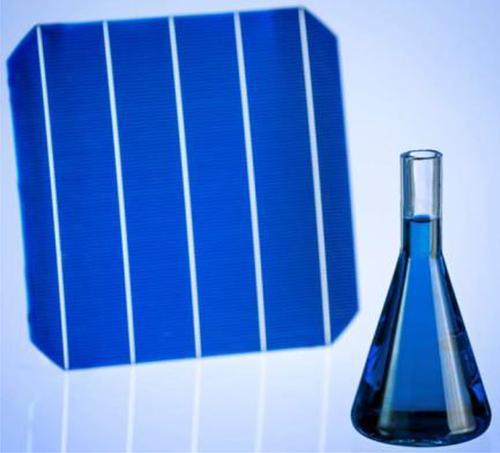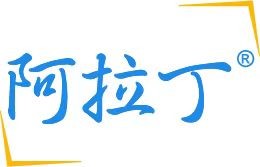Our official English website, www.x-mol.net, welcomes your
feedback! (Note: you will need to create a separate account there.)
Large‐Area PEDOT:PSS/c‐Si Heterojunction Solar Cells With Screen‐Printed Metal Contacts
Solar RRL ( IF 6.0 ) Pub Date : 2018-02-12 , DOI: 10.1002/solr.201700191 Dimitri Zielke 1 , Ralf Gogolin 1 , Marc-Uwe Halbich 1 , Cornelia Marquardt 1 , Wilfried Lövenich 2 , Rüdiger Sauer 2 , Jan Schmidt 1, 3
Solar RRL ( IF 6.0 ) Pub Date : 2018-02-12 , DOI: 10.1002/solr.201700191 Dimitri Zielke 1 , Ralf Gogolin 1 , Marc-Uwe Halbich 1 , Cornelia Marquardt 1 , Wilfried Lövenich 2 , Rüdiger Sauer 2 , Jan Schmidt 1, 3
Affiliation

|
A large‐area BackPEDOT solar cell with a phosphorus‐diffused emitter and a high‐temperature‐fired screen‐printed Ag grid on the front surface and PEDOT:PSS as hole‐collecting and passivating layer at the cell rear is developed. As base material, 15.6 × 15.6 cm2 pseudo‐square industrial‐type boron‐doped p‐type Czochralski‐grown silicon wafers are used. The set‐peak firing temperature (Tset) is varied from 850 to 870 °C with a total number of 32 processed solar cells. The optimum Tset of 870 °C results in a median solar cell efficiency of 19.0%. The best large‐area BackPEDOT solar cell achieves an efficiency of 20.2%. Based on external quantum efficiency measurements, a rear surface recombination velocity Srear < 70 cm s−1 is determined, a value which is on a par with today's industrial high‐efficiency solar cells. Furthermore, a low‐temperature metal paste is introduced, which is shown to be capable of metalizing the PEDOT:PSS‐covered rear surface of the solar cells without damaging the rear surface passivation. The principle feasibility of such a rear metallization scheme is demonstrated. The parasitic absorption of infrared light within the PEDOT:PSS layer is identified as the major loss mechanism in the current cells, which might be overcome in the future by adding infrared‐transparent additives to the PEDOT:PSS dispersion.
中文翻译:

具有丝网印刷金属触点的大面积PEDOT:PSS / c-Si异质结太阳能电池
开发了一种大面积的BackPEDOT太阳能电池,该电池的前表面带有磷扩散的发射极,并经高温烧制,丝网印刷的Ag网格,而PEDOT:PSS作为电池后部的空穴收集和钝化层。作为基材,使用了15.6×15.6 cm 2的伪正方形工业型掺硼p型切克劳斯基生长的硅片。设定峰值烧成温度(T set)在850至870°C之间变化,共有32个已处理的太阳能电池。最佳的T设定为870°C,太阳能电池的中值效率为19.0%。最好的大面积BackPEDOT太阳能电池可实现20.2%的效率。根据外部量子效率测量,后表面重组速度小号后部 <70厘米小号-1被确定,一个值,该值与当今的工业的高效率的太阳能电池相媲美。此外,还引入了一种低温金属浆料,该浆料能够在不损坏背面钝化的情况下使PEDOT:PSS覆盖的太阳能电池背面金属化。证明了这种后金属化方案的原理可行性。PEDOT:PSS层中红外光的寄生吸收被确定为当前电池的主要损耗机制,将来可以通过在PEDOT:PSS分散体中添加红外透明添加剂来克服。
更新日期:2018-02-12
中文翻译:

具有丝网印刷金属触点的大面积PEDOT:PSS / c-Si异质结太阳能电池
开发了一种大面积的BackPEDOT太阳能电池,该电池的前表面带有磷扩散的发射极,并经高温烧制,丝网印刷的Ag网格,而PEDOT:PSS作为电池后部的空穴收集和钝化层。作为基材,使用了15.6×15.6 cm 2的伪正方形工业型掺硼p型切克劳斯基生长的硅片。设定峰值烧成温度(T set)在850至870°C之间变化,共有32个已处理的太阳能电池。最佳的T设定为870°C,太阳能电池的中值效率为19.0%。最好的大面积BackPEDOT太阳能电池可实现20.2%的效率。根据外部量子效率测量,后表面重组速度小号后部 <70厘米小号-1被确定,一个值,该值与当今的工业的高效率的太阳能电池相媲美。此外,还引入了一种低温金属浆料,该浆料能够在不损坏背面钝化的情况下使PEDOT:PSS覆盖的太阳能电池背面金属化。证明了这种后金属化方案的原理可行性。PEDOT:PSS层中红外光的寄生吸收被确定为当前电池的主要损耗机制,将来可以通过在PEDOT:PSS分散体中添加红外透明添加剂来克服。


















































 京公网安备 11010802027423号
京公网安备 11010802027423号